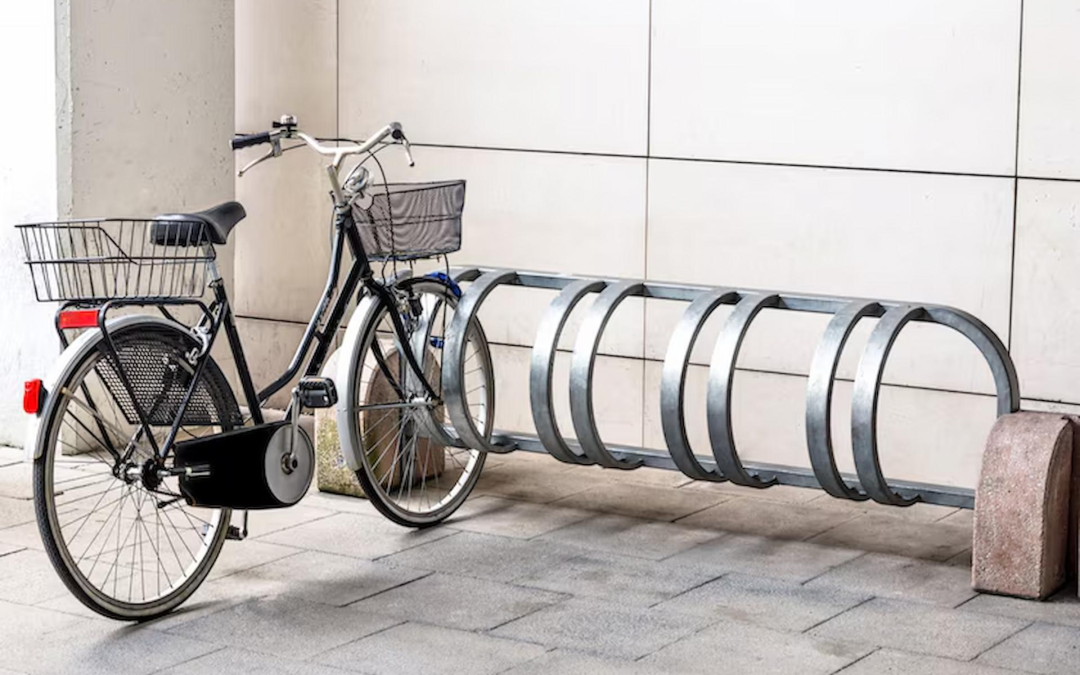Cycling has gained immense popularity in recent years, not only as a recreational activity but also as a sustainable mode of transportation. Whether you are an avid cyclist or just getting started, one thing remains clear: a reliable and efficient bike rack. A bike rack is essential for securely transporting your bike, whether heading to the local trail, commuting to work, or embarking on a cross-country adventure. This blog post aims to explore various types of bike racks, helping you make an informed decision about which one best suits your needs.
Roof-Mounted Bike Racks
Roof-mounted bike racks are popular among cyclists, especially those who frequently travel long distances. These racks offer several advantages:
Pros:
- Versatility:Roof-mounted racks can carry a variety of bikes, including road bikes, mountain bikes, and even some e-bikes.
- Accessibility:Keeping the bike on the roof gives you full access to your car’s trunk or rear hatch.
- Stability: These racks provide a stable and secure way to transport bikes, minimising the risk of damage.
Cons:
- Height Restrictions: Loading and unloading bikes can be challenging, especially for shorter individuals or those with heavy bikes.
- Aerodynamics:Roof-mounted racks can affect your vehicle’s aerodynamics, reducing fuel efficiency.
Ideal For:
- Cyclists who travel long distances and need to maximise trunk space.
- Those with multiple types of bikes require a versatile solution.
Hitch-Mounted Bike Racks
Hitch-mounted bike racks are another popular option, particularly for those prioritising ease of use and quick installation.
Pros:
- Ease of Use: These racks are generally easier to load and unload than roof-mounted racks, making them ideal for frequent use.
- Capacity: Many hitch-mounted racks can carry multiple bikes, making them perfect for family trips or group rides.
- Security: Hitch racks often have locking mechanisms to secure the bikes and the rack itself to the vehicle.
Cons:
- Trunk Access: Some hitch-mounted racks can obstruct access to the trunk or rear hatch, though many models now come with tilt-away features to alleviate this issue.
- Cost:Hitch-mounted racks tend to be more expensive than other racks.
Ideal For:
- Families or groups of cyclists who need to transport multiple bikes.
- Those who prioritise ease of loading and unloading.
Trunk-Mounted Bike Racks
Trunk-mounted bike racks are a cost-effective and versatile solution, making them a popular choice for casual cyclists and those on a budget.
Pros:
- Affordability: These racks are generally more affordable than hitch or roof-mounted options.
- Portability: Trunk-mounted racks are lightweight and easy to store when not in use.
- Compatibility:They can be used with various vehicles, including sedans, hatchbacks, and SUVs.
Cons:
- Stability: Trunk-mounted racks may not be as stable as a hitch or roof-mounted options, leading to potential bike movement during transit.
- Vehicle Access: These racks can obstruct access to the trunk, making it inconvenient for long trips.
Ideal For:
- Casual cyclists and those on a budget.
- Individuals with multiple vehicles need a versatile and portable solution.
Truck Bed Bike Racks
Truck bed bike racks are designed specifically for pickup trucks, offering a secure and efficient way to transport bikes without additional towing equipment.
Pros:
- Security: These racks keep bikes secure and protected within the truck bed, reducing the risk of damage or theft.
- Accessibility: Truck bed racks are typically more accessible for loading and unloading bikes, as they are at a convenient height.
- Capacity: Truck bed racks can carry multiple bikes, making them ideal for group rides.
Cons:
- Vehicle Specific: These racks are only compatible with pickup trucks, limiting their use.
- Bed Space:Using a truck bed rack can limit the space for other cargo.
Ideal For:
- Pickup truck owners who need a dedicated bike transport solution.
- Those who frequently transport multiple bikes and require easy access.
Spare Tire Bike Racks
Spare tyre bike racks are specifically designed for vehicles with externally mounted spare tyres, such as certain SUVs and off-road vehicles. These racks provide a unique solution that securely holds bikes using the spare tyre mount.
Pros:
- Space Utilisation: Spare tyre racks efficiently use existing vehicle features, saving space and keeping your bikes secure.
- Accessibility:They are mounted at a convenient height, making it easy to load and unload bikes without straining.
- No Impact on Trunk Access:Unlike other racks, spare tyre racks usually do not obstruct trunk access, maintaining the vehicle’s functionality.
Cons:
- Vehicle Specific: These racks are only compatible with vehicles that have externally mounted spare tyres.
- Limited Capacity: These racks typically can carry one or two bikes, which may not be sufficient for larger groups or families
Ideal For:
- Owners of SUVs or off-road vehicles with externally mounted spare tyres.
- Individuals who prioritise easy access to their bikes and vehicle trunks.
Conclusion
Choosing the right bike rack depends on various factors, including your vehicle type, budget, and specific needs as a cyclist. Roof-mounted racks offer versatility and stability, making them ideal for long-distance travellers. Hitch-mounted racks prioritise ease of use and capacity, perfect for families and frequent riders. Trunk-mounted racks provide an affordable and portable solution for casual cyclists, while truck bed racks cater to pickup truck owners who need a secure and accessible option. By understanding the pros and cons of each type, you can make an informed decision and ensure that your bike is transported safely and efficiently on all your cycling adventures.

